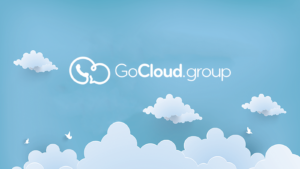Customer lifetime value (CLV) is a business metric that measures how much a business can plan to earn from the average customer over the course of the relationship. Differences in products, costs, purchase frequencies and purchase volumes can make customer lifetime value calculations complex. However, with the right tools, you can find customer lifetime value in just a few clicks.
With an understanding of CLV, you can make better-informed marketing and sales decisions, among other benefits. This guide provides insights about customer lifetime value, how to calculate this metric and more useful information about CLV that business owners and managers should know.
What Is Customer Lifetime Value (CLV)?
Customer lifetime value (CLV) is a measure of the total income a business can expect to bring in from a typical customer for as long as that person or account remains a client.
When measuring CLV, it’s best to look at the total average revenue generated by a customer and the total average profit. Each provides important insights into how customers interact with your business and if your overall marketing plan is working as expected.
For a more in-depth look, you may want to break down your company’s CLV by quartile or some other segmentation of customers. This can give greater insight into what’s working well with high-value customers, so you can work to replicate that success across your entire customer base.
Why Is Customer Lifetime Value Important to Businesses?
Why do businesses care about CLV? Here are a few key reasons to track and use CLV:
- You Can’t Improve What You Don’t Measure: Once you start measuring customer lifetime value and breaking down the various components, you can employ specific strategies around pricing, sales, advertising and customer retention with a goal of continuously reducing costs and increasing profit.
- Make Better Decisions on Customer Acquisition Costs: When you know what you will earn from a typical customer, you can increase or decrease spending to ensure you maximize profitability and continue to attract the right types of customers.
- Improved Forecasting: CLV forecasts help you make forward-looking decisions around inventory, staffing, production capacity and other costs. Without a forecast, you could unknowingly overspend and waste money or underspend and put yourself in a bind where you struggle to keep up with demand.
What Are the Advantages of Customer Lifetime Value?
- Improve Customer Retention: One of the biggest factors in addressing CLV is improving customer retention. Tracking these details with accurate segmentation can help you identify your best customers and determine what’s working well.
- Drive Repeat Sales: Some retailers, tech companies, restaurant chains and other businesses have loyal customer bases that come back again and again. You can use CLV to track the average number of visits per year or over the customer lifetime and use that data to strategize ways to increase repeat business.
- Encourage Higher-Value Sales: Netflix is an example of a business that improved CLV through higher pricing but learned years ago that increasing costs too quickly may scare off long-time customers. The right balance is key to success here.
- Increase Profitability: Overall, a higher CLV should lead to bigger profits. By keeping customers longer and building a business that encourages them to spend more, you should see the benefit show up on your bottom line.
How to Measure Customer Lifetime Value
- Determine Your Average Order Value: Start by finding the value of the average sale. If you have not been tracking this data for long, consider looking at a one- or three-month period as a proxy for the full year.
- Calculate the Average Number of Transactions Per Period: Do customers come in several times a week, which might be common with a coffee shop, or only once every few years, which could be the case at a car dealership? The frequency of visits is a major driver of CLV.
- Measure Your Customer Retention: Finally, you’ll need to figure out how long the average customer sticks with your brand. Some brands, like technology and car brands, inspire lifelong loyalty. Others, like gas stations or retail chains, may have much less loyal customers.
- Calculate Customer Lifetime Value: Now you have the inputs. It’s time to multiply the three numbers together to calculate CLV per the formula below.
Customer Lifetime Value Formula
Here is the formula for measuring:
CLV = Average Transaction Size x Number of Transactions x Retention Period
Ready to get started?
CLV planning and account forecasting can be daunting for CSM teams that don’t have the proper visibility and insights into key customer success metrics and data sources. With GoCloud.group, your team can have access to the information you need to plan and discuss CLV, as well as the tools to increase transparency with other departments and your customers.








